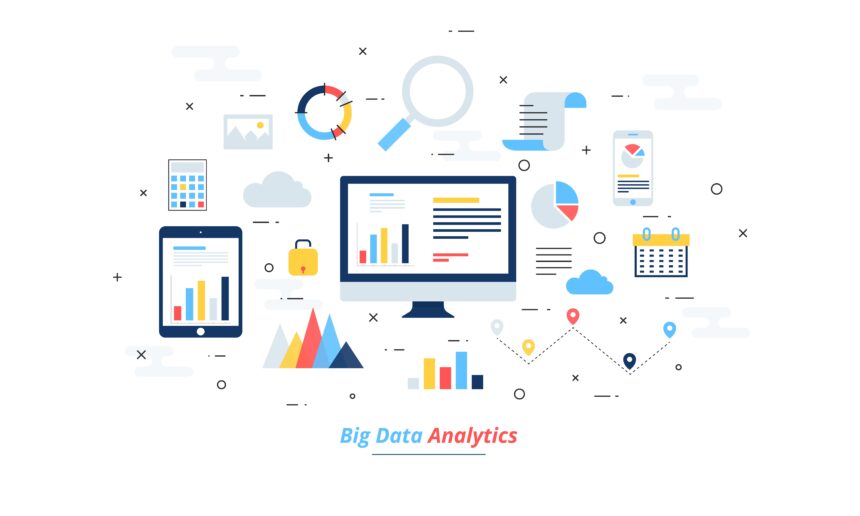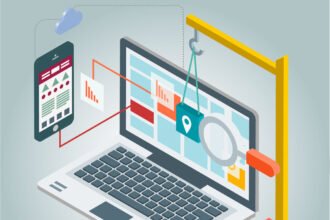It’s no secret that the key to having a successful onboarding process is data. All information you collect from people who admire your products and services represents the core of marketing & sales. Hence, data analytics is the main basis for product management decisions.
The more information you can gather about people’s misunderstandings and struggles they often go through, the better it’ll be for optimizing the processes and interface within your product or strengthening your onboarding process.
Let’s not wait any further and find out how data analytics can help us maximize the customer onboarding process to the maximum level.
Let’s dive right in!
How data can optimize your onboarding process
Data analytics importance
Initially, we have to realize that we aren’t living in a time when marketing was all about sending emails to hundreds of people. As technology has evolved, industries are too. Technology combined with tools can easily automate and collect customer behavior data.
The truth behind customer onboarding processes in many industries such as banks is relatively poor at managing and collecting consumer data. Therefore, this makes it harder for marketers and financial managers to understand their customers deeper. Moreover, this is a good reason you need to be concerned about data and be hungry for it. After all, the onboarding process is all about understanding the customer.
When you gather data, you create a more personalized experience. For example, some questions may include:
- The demographics of your customers
- Their status
- What is their job?
- Where do they live?
- How often do they go for a coffee? And many more personalized questions
The three biggest enemies to user onboarding are the lack of data analysis, data collection, and the wrong amount of information. Unfortunately, many businesses worldwide are not doing a good job collecting data and thus, fail to enhance customer relationships. The onboarding process will only get more personalized when you collect enough data and ensure its quality.
Use User onboarding platforms
First impressions are the key to a successful onboarding process, and data works well with a user onboarding platform. Therefore, that’s why it’s vital to perfect your user onboarding flow. Without a good one, those new sign-ups and subscriptions won’t stick around for too long. User onboarding, in other words, is your golden ticket to opportunity and to build behavior patterns that you can use for long-term retention and growth for your business.
Here is a list of user onboarding tools you can consider using:
- Appcues: best for code-free user onboarding, meaning that you can build onboarding experiences without having any knowledge of coding. In short, marketers can do this too, and they don’t have to know about coding!
- JavaScript & jQuery: if you are concerned about DIY onboarding, this platform is the right choice for you and will allow you to code your user onboarding; however, keep in mind that this is for those who know how to code.
- Proof: great for adding live social proof. An excellent platform for helping you make decisions. With this tool, you’re able to display social proof on your site, where you’ll receive real-time alerts on who signed up or viewed your product demo.
Pay attention to the metrics
Tracking is an essential step in your user onboarding process and allows you to evaluate how efficient your user onboarding strategy is. Here, the main idea is to assess your overall user experience and targeting. However, other vital indicators break down the process and allow product managers to improve customer experiences and communication.
The primary goal here is to use a free-trial flow that will allow users to go from zero to understanding your product in the shortest time possible. Thus, your onboarding experience is assessed heavily based on how fast you can make your customer learn your product.
That’s why when you collect information during the first phase of the user onboarding experience, you’ll be able to assess your retention rates and conversions better.
Metrics that define the customer onboarding journey
Many companies who use data analytics will usually use a standard analytics platform to monitor their marketing practices. The first part of the standard funnel that many businesses will work with includes free trials to gain website visitors. Quite an effective way to collect data and an excellent indicator in increasing conversion rates that target specific product pages.
Moreover, what’s essential to know is the common characteristics you can find in users who participate in these free trials and will later become regular customers. The more information you can collect during the initial onboarding phase, the easier it’ll become to know more about your potential customers. In addition, this data can enhance sales processes and your marketing practices.
Furthermore, what we think is so good about knowing more about your customers is eliminating the need to use a customer persona framework. You’re saving more time and even money only by doing this.
So, all you have to do is implement tests, personalization, what triggers your customer from your product or service, and collect the data during the user onboarding process. Luckily, you have platforms that can help you do all of this, and don’t have to do everything yourself.
Make use of KPIs
When optimizing the user onboarding process, an excellent place to start is to minimize the onboarding time as much as you can. The longer it takes to onboard a customer, the more likely they’ll look for another option.
In short, your focus should be on enhancing user flow and clearing all the bumps on the road. To help you ensure you are doing well, here are some key KPIs you need to measure:
- The abandonment rate of the onboarding process (necessary for data collection)
- The success of conversion rates during the onboarding process
- The number of interactions required to complete the onboarding process
So, it would be best if you were concerned about letting your customers open a new account because that is halfway through the onboarding process and empowering them to sign up or use your product more frequently. Here are some important KPIs you can measure to assess engagement and collect the correct data:
- The rate at which customers are downloading and using your product or service
- Average daily, weekly, and monthly log-ins
- The rate of new customers visiting your site or opening a new account
- The adoption rate of products and features available, and more
Use pre-built customer segments in the onboarding process
We can agree on one thing, and that’s the fact that not all customers possess the exact needs. An analytics engine will help you segment different customers, and you can only imagine how easy it’ll be for you to create segmentations between demographics, age groups, and more.
The reason to segment your customers based on these characteristics is to serve them better and give better offerings during the user onboarding process. Based on the type of pre-built customer segment, communication and other steps will be more dynamic in enhancing their customer journey and improving their user experience by a considerable margin.
Create visualizations and reports
To further improve your onboarding process flow, you need to visualize it. Visualizations are easier to process for our brains. In fact, 90% of the information processed in our minds is visual. Of course, data only won’t give you the big picture, but context is also needed.
To make your visualizations much more precise and effective, you can prepare an onboarding flow for all your products and customer segments. For instance, use segments for individuals, enterprises, investors, students, and much more.
Ultimately, you’ll have to create separate flow reports and funnels for every user onboarding process. Once you know your segmentation, it’s time to prepare a funnel report for each. Otherwise, the reports won’t fulfill your purpose and gather the data you’re looking for!
Wrapping it up
Well, that’s about it for this article. These were the ways data analytics helps better understand our customer onboarding process. Unfortunately, many businesses don’t pay enough attention to gathering consumer data, as we mentioned before. Moreover, this is one of the biggest mistakes you can make as it won’t help you optimize your user onboarding process. Seek to reduce the time it takes for your onboarding process and gather as much quality data as you can. Get rid of insufficient data as it might be the same as not gathering data at all. There’s nothing worse than trying to serve an audience and not giving them what they ask for. In short, consumer data is what makes you successful in your onboarding process and what determines your long-term success.










